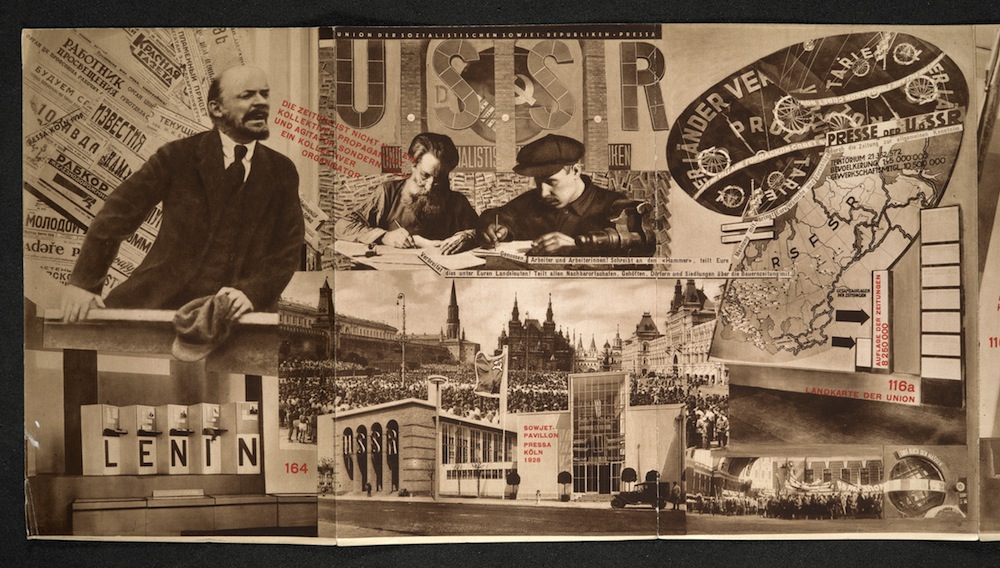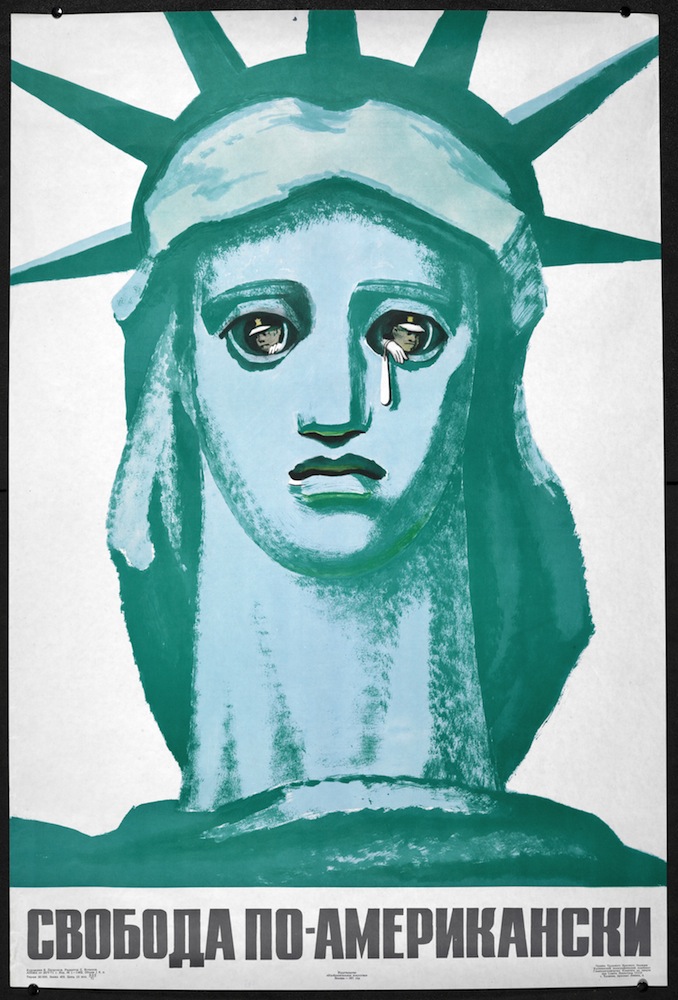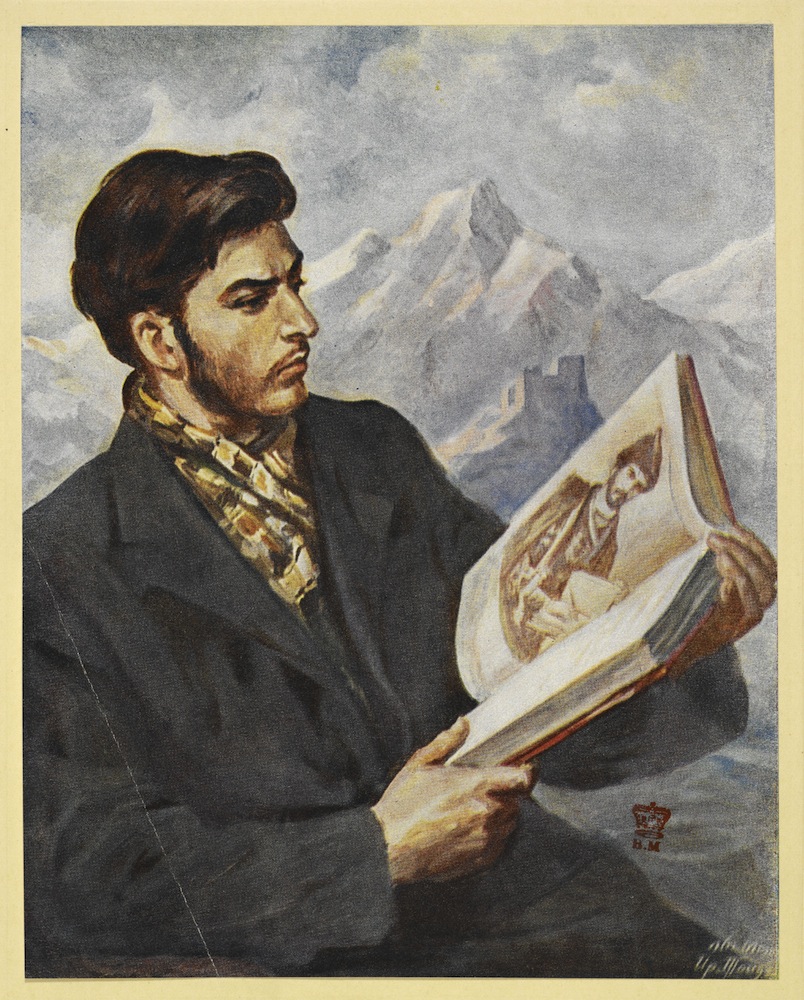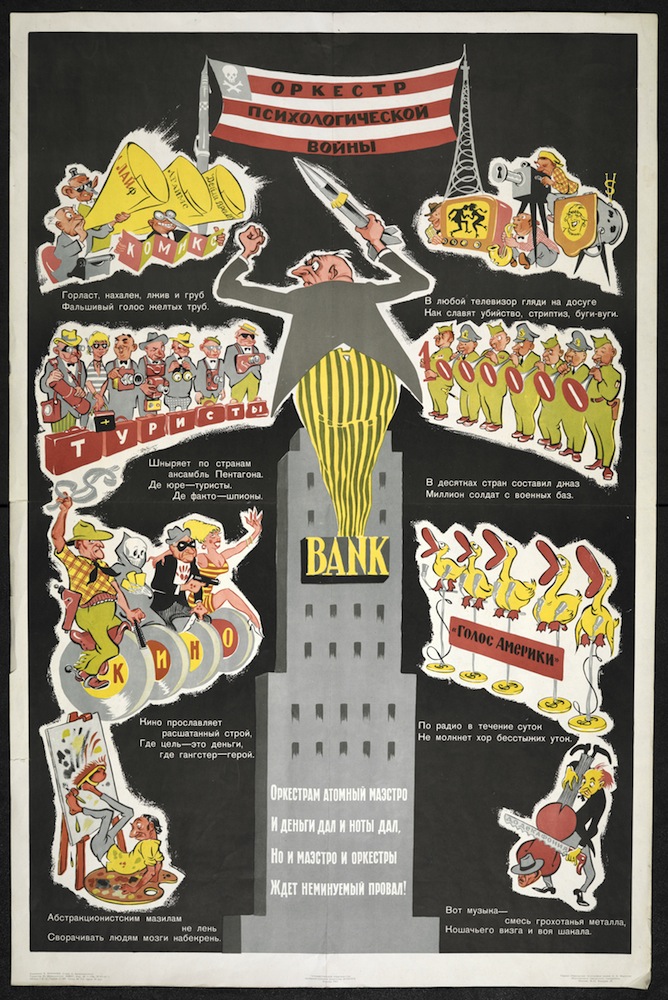British Library exhibition explores Soviet dark arts
London’s British Library has launched a major new exhibition examining centuries of state propaganda from around the world, including Russia. Propaganda: Power and Persuasion looks at how governments have used propaganda to influence nations, create feelings of national pride or even promote healthy lifestyles.
Among the more than 200 exhibits is a 1971 Soviet poster lampooning New York’s Statue of Liberty as a symbol of freedom by presenting the iconic structure as a look-out tower for US police. Another work, a painting of a young Joseph Stalin by Irakli Toidze pictures the Soviet ruler in an idyllic mountain setting reading the Georgian epic The Knight in the Panther’s Skin. The painting not only depicts Stalin as an erudite and cultured young scholar — precisely how he wanted to be seen — but it also embraces both Russian and non-Russian cultures within the Soviet state.
A brochure from the 1928 International Press Exhibition in Cologne shows the Soviet pavilion, decorated by avant-garde artist El Lissitzky. Although officially a gathering of international press and communications agencies, the pavilions were politicised as each country strived to present itself as culturally and technologically sophisticated. In El Lissitzky’s case, the pavilion provided a propaganda platform for Stalin’s regime.
Elsewhere, the exhibition explores the the propaganda behind warfare. A cartoon from 1904 is a striking example of the misrepresentation of battle, in this case, the Russo-Japanese war. Despite losing on both land and sea, the cartoon shows Russian ships trouncing the Japanese.
Other items in the exhibition include Nazi propaganda as well as contemporary items such as bank notes, badges and even tweets. “We want visitors to consider the role of propaganda in their own lives today, as well as look at the state’s use of propaganda throughout history,” said Jude England, one of the curators of the exhibition. “That’s why, as well as displaying iconic pieces of propaganda from the Library’s collections, such as posters from both world wars, the Cold War and Vietnam, we’ll also be focusing on more surprising examples, such as the 2012 Olympics and even Twitter – things you wouldn’t necessarily associate with a word like ‘propaganda’.”
A series of events will also be held alongside the exhibition including a talk on State Propaganda behind the Iron Curtain and a screening of Eisenstein’s Strike.
The exhibition runs until 17 September.




